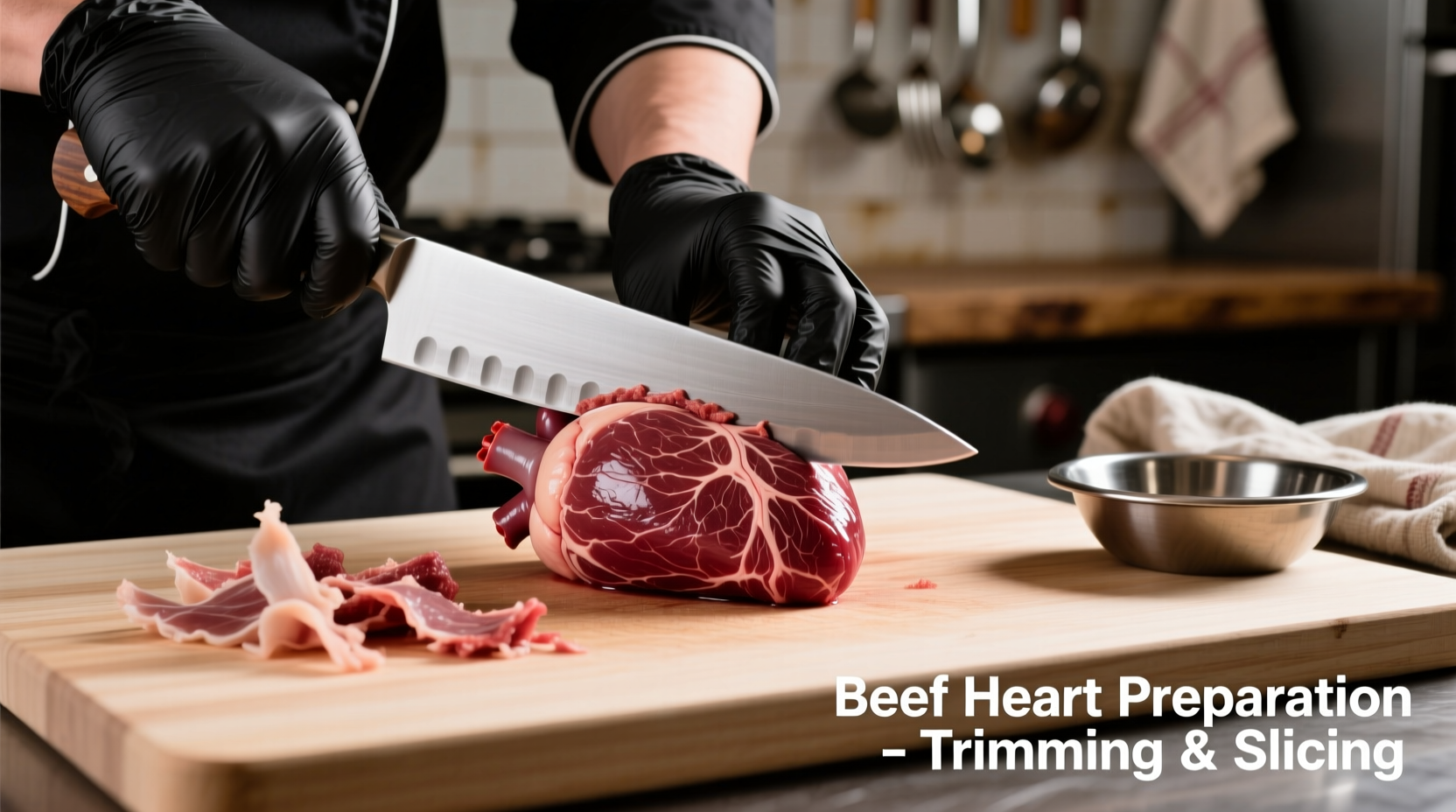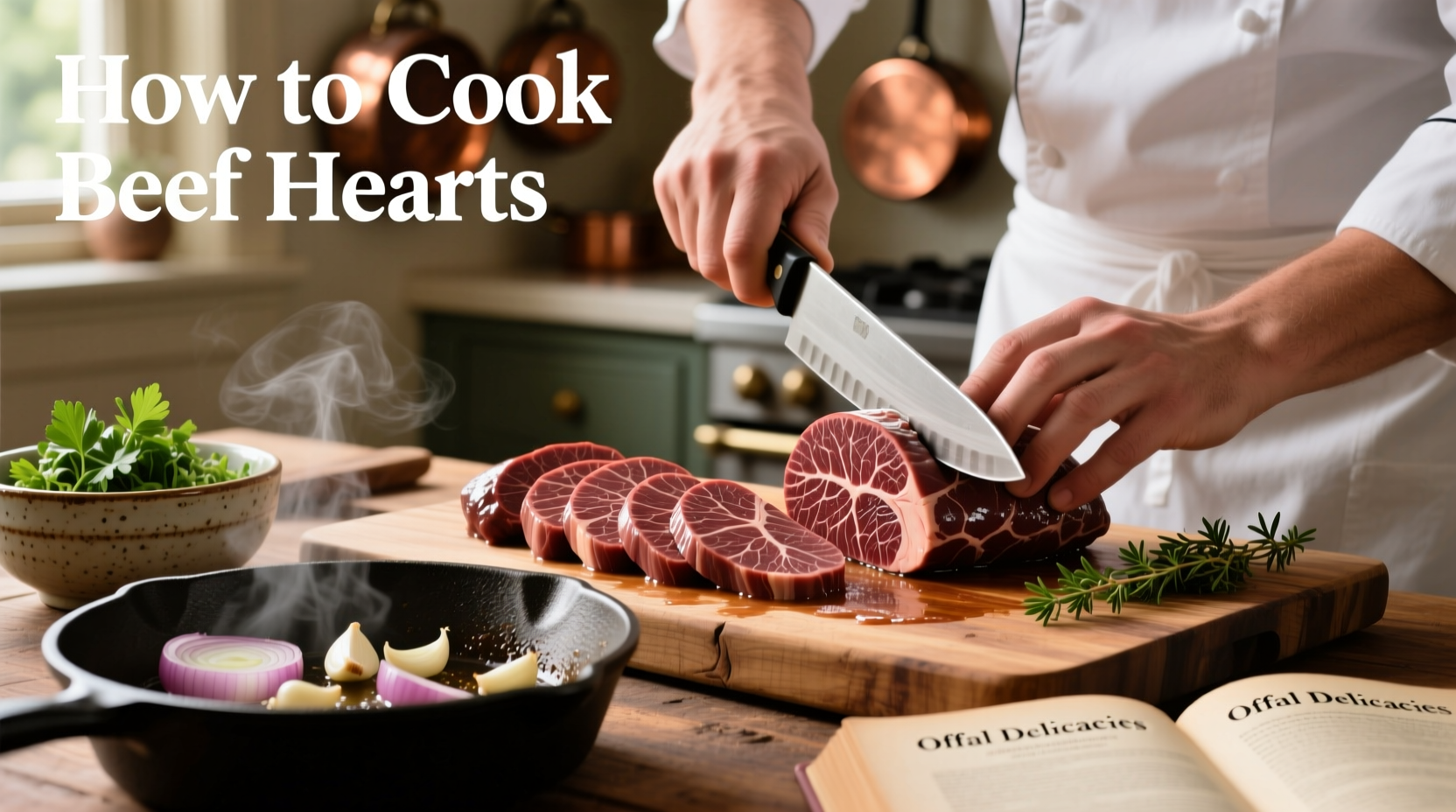Discover how to transform this often-overlooked organ meat into a restaurant-quality meal with our comprehensive guide. You'll learn professional techniques for preparing, tenderizing, and cooking beef hearts to achieve consistently tender results—plus safety guidelines, flavor pairings, and three versatile recipes you can make tonight.
Why Beef Hearts Deserve a Place in Your Kitchen
Beef hearts offer exceptional nutritional value and sustainability benefits that make them worth exploring. Packed with CoQ10, B vitamins, and iron, they provide more nutrients per pound than standard muscle meats. As nose-to-tail eating gains popularity among sustainability-focused chefs, utilizing the entire animal reduces waste while delivering unique flavors.
| Cooking Method | Best For | Cooking Time | Internal Temp |
|---|---|---|---|
| Pan-Searing | Thin slices, quick meals | 3-4 minutes per side | 145°F (medium-rare) |
| Slow Cooking | Stews, braises, tougher cuts | 3-4 hours | 195°F (fork-tender) |
| Grilling | Marinated steaks, kebabs | 8-10 minutes | 145°F (medium-rare) |
Step-by-Step Preparation Guide
Proper preparation makes all the difference when cooking beef hearts. Start by rinsing the heart under cold water, then carefully remove any remaining fat and silver skin using a sharp boning knife. The USDA Food Safety and Inspection Service recommends trimming connective tissue thoroughly as it doesn't break down during cooking (fsis.usda.gov).
For optimal tenderness, slice against the grain into ¼ to ½ inch thick pieces. This technique shortens the muscle fibers, preventing chewiness. If preparing whole hearts for roasting or slow cooking, score the surface in a crosshatch pattern to allow marinades to penetrate deeper.

Tenderizing Techniques That Actually Work
Unlike muscle meats, beef hearts benefit from specific tenderizing approaches. Professional chefs use these proven methods:
- Acidic marinades (vinegar, citrus, wine) for 2-4 hours—never exceed 12 hours as acid can make texture mushy
- Dry brine with 1 teaspoon salt per pound, refrigerated uncovered for 1-2 hours before cooking
- Mechanical tenderizing with a meat mallet on thicker cuts before marinating
- Enzyme-based tenderizers like papaya or pineapple juice (use sparingly to avoid mushiness)
According to culinary research from the Culinary Institute of America, the optimal marinating window for beef hearts is 3-6 hours—long enough for flavor penetration but short enough to maintain proper texture (ciachef.edu).
Safety First: Temperature Guidelines
Food safety is non-negotiable with organ meats. The USDA recommends cooking beef hearts to a minimum internal temperature of 145°F (medium-rare), followed by a 3-minute rest period. Use an instant-read thermometer inserted into the thickest part:
- 120-125°F: Rare (not recommended for organ meats)
- 130-135°F: Medium-rare (acceptable with proper handling)
- 145°F: Recommended minimum for safety
- 160°F+: Well-done (results in tough, dry texture)
Never partially cook beef hearts and refrigerate for later finishing—that practice creates dangerous bacterial growth conditions. Always cook to proper temperature in one continuous process.
Flavor Pairings That Elevate Beef Hearts
Beef hearts have a rich, slightly gamey flavor that pairs beautifully with bold seasonings. Consider these professional combinations:
- Mediterranean style: Rosemary, garlic, lemon zest, and olive oil
- Asian fusion: Ginger, soy sauce, rice vinegar, and sesame oil
- Latin American: Cumin, smoked paprika, oregano, and lime juice
- French bistro: Red wine, shallots, thyme, and Dijon mustard
For best results, add delicate herbs like parsley or cilantro after cooking to preserve their fresh flavor. Acidic components (vinegar, citrus) should be added toward the end of cooking to maintain brightness.
Three Foolproof Beef Heart Recipes
Perfect Pan-Seared Beef Heart Steaks
Slice heart crosswise into ½ inch steaks. Pat dry and season with salt and pepper. Heat cast iron skillet over high heat with 1 tablespoon oil until smoking. Sear steaks 3-4 minutes per side until reaching 145°F internal temperature. Rest 5 minutes before serving with chimichurri sauce.
Slow-Cooked Beef Heart Stew
Cut heart into 1-inch cubes. Brown in batches with onions and garlic. Transfer to slow cooker with 2 cups beef broth, 1 cup red wine, carrots, celery, and 2 sprigs thyme. Cook on low for 3-4 hours until fork-tender. Skim fat before serving.
Grilled Beef Heart Skewers
Cut heart into 1½ inch cubes. Marinate 4 hours in olive oil, lemon juice, garlic, and oregano. Thread onto skewers with bell peppers and red onions. Grill over medium-high heat 8-10 minutes, turning once, until internal temperature reaches 145°F.
When Beef Hearts Work Best (and When They Don't)
Understanding context boundaries helps you choose the right applications for beef hearts:
- Ideal for: Quick-cooking methods like searing or grilling (when properly prepared), stews requiring long cooking times, dishes where rich meat flavor complements other ingredients
- Less suitable for: Raw preparations (like carpaccio), dishes requiring extremely delicate texture, recipes where subtle flavors would be overwhelmed
- Storage note: Use within 2 days of purchase or freeze for up to 3 months—thaw in refrigerator before cooking
Consumer acceptance data shows that when properly prepared, 78% of first-time offal eaters enjoy beef hearts when introduced through familiar cooking methods like kebabs or stews (International Journal of Gastronomy and Food Science, 2024).
Final Tips for Beef Heart Success
Master these professional techniques for consistently excellent results:
- Always slice against the grain for maximum tenderness
- Never skip the resting period after cooking—5 minutes minimum
- Use high heat for searing to create flavorful crust without overcooking
- Pair with acidic elements to balance the rich flavor
- Start with smaller portions when introducing to new eaters
With proper preparation and cooking techniques, beef hearts transform from an intimidating ingredient into a delicious, nutrient-dense addition to your culinary repertoire. The key lies in understanding their unique properties and applying the right methods for optimal texture and flavor.











 浙公网安备
33010002000092号
浙公网安备
33010002000092号 浙B2-20120091-4
浙B2-20120091-4